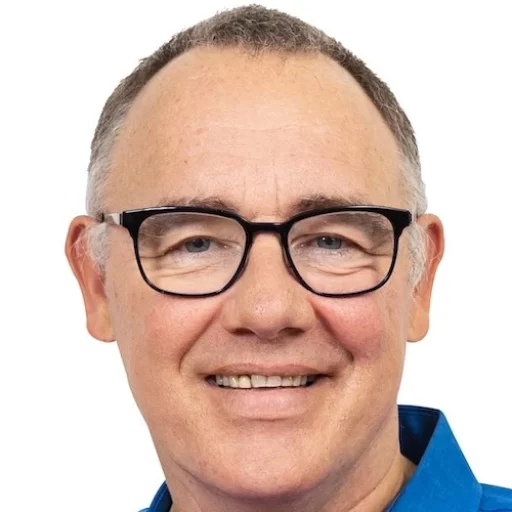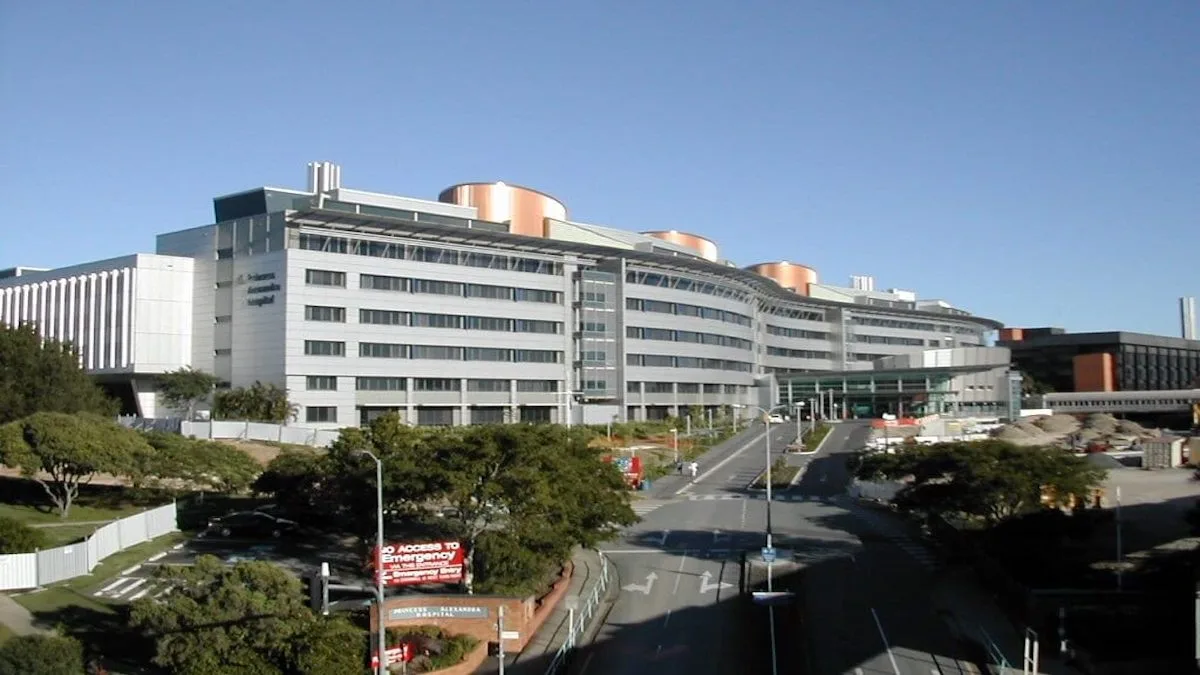Waking in Princess Alexandra Hospital Spinal Unit caused me to recall the Winston Churchill quote, “If you’re going through hell, keep going.”
Table of contents
- Princess Alexandra Hospital Brisbane
- 1 December 1991 and Princess Alexandra Hospital Spinal Unit
- Meanwhile in Aussie Politics
- Spinal Rehab Brisbane
- Spinal Injuries Unit
Princess Alexandra Hospital Brisbane
Princess Alexandra Hospital Spinal Unit was somewhere I had never heard of prior to December 1991. However all that was about to change.
I had spent most of 1990 and 1991 settling down to my new domestic life with Jenny. My Grandad, Bob O’Connell died around this time, and Jenny and I took out a mortgage and moved into his home in Edmonton.
I had previously hurt my back playing rugby league. This was followed by a period of inactivity and a decline in my general fitness. However, during 1991 I got back into exercising for strength and fitness. I was running in the afternoons to supplement my daily weights workout at the gym. As time passed, Jenny, once a reluctant participant, began to accompany me on visits to the gym.
There was a motive behind my fitness drive. I wanted to be in top shape for my wedding, which was only 4 weeks away. Jenny and I also wanted to look good and be fit for our honeymoon in Tasmania. We intended to make up for all the food and alcohol we had been denying ourselves over recent weeks.
Jenny was highly motivated to fit into her wedding dress and look her best on her wedding day. I felt terrific. As summer approached, I was stronger and fitter than any other time in my life. I was not just strong, I felt indestructible.
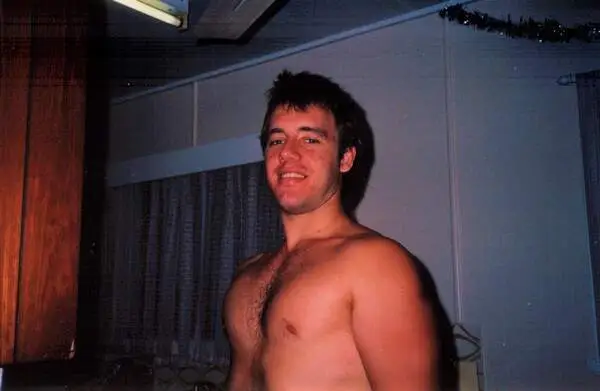
1 December 1991 and Princess Alexandra Hospital Spinal Unit
The first day of December 1991, saw what I thought was the destruction of all my dreams and aspirations. I had no reason to expect that this balmy Saturday morning held anything out of the ordinary. Yet my life was about to be changed dramatically.
It was a Saturday and I had hoped for a day of rest. Jenny’s father, Andy, and his wife, Dianne, had organised a trip on his sailing boat. I was looking forward to it. We arrived at Jenny’s parents’ house around 11 a.m. and headed to the boat ramp. Andy’s 21-footer was his pride and joy. I had never been one for boats, but it seemed a relaxing enough way to spend the day. A few minutes later we were at sea, sailing out of Trinity Inlet.
We all do things occasionally without giving much thought to the outcome. We make decisions that we later realise were wrong. On this day, in a fraction of a second, I made a decision that changed the rest of my life. I had done a lot of silly things in my life. However, previously I rarely came off the worse for wear. I never had to be careful – terrible things just did not happen to me.
The Dive
I can’t give a reason for what happened next. It was certainly hot, and that undoubtably had something to do with it. I stood, took a breath and dived out of the boat. I remember the water was muddy so I attempted a shallow dive. Since the boat was still moving, I reasoned there had to be a fair depth of water. On the whole, I guess I never gave the matter much thought before diving in.
After I entered the water, the top of my head hit something hard. The impact felt no greater than a solid whack – there was no great pain. Initially, I thought I was just stunned and would recover in a couple of seconds. However, I floated face down in the water, staring at the sand bar below me, unable to move my body.
Slowly I began to realise what had happened. There was no feeling in any part of my body below my shoulders. Try as I might, I could not roll over. I was sure I was about to drown. The world had been my oyster. That all ended the second my head struck the densely packed sand that lay underwater just yards from the boat.
Anger and the Instinct to Live
As the magnitude of what had happened to me set in, I remember thinking that I wanted to die. I prayed that it would happen quickly. But suddenly, Andy lifted me out of the water, and my lungs filled with air. “Damn you!” I thought. “I wish you had let me drown!”
Then, as if he could read my thoughts, Andy slowly lowered me back into the water. Apparently, this was done to see if I was pretending. As my face re-entered the water and I had no breath left, my attitude changed completely. “For God’s sake lift me up or I’ll drown,” I thought. Death can sometimes seem the easy way out, but the desire to live is the strongest human emotion.
No Joke
Realising I was not pretending, Andy rolled me over so I was floating on my back. I was not in any pain – the only discomfort I could feel was the salt water stinging my eyes.
Immediately I tried to move my right arm. I could not feel it, but as I looked down I saw it lift out of the water. It rose up, but as I lifted it higher it folded and my hand landed on my face and I could not move it.
I could feel my hand on my face, but I could only feel my hand with my face. There was no sensation coming from my hand or fingers. It was the strangest feeling.
My hand felt like a foreign object. It was like it was someone else’s hand that was connected to my body. The best way I can describe it is that it was like the feeling you get when you have slept on your arm for a while and it has gone numb. That was how I felt, except I felt that way all over.
Screwed and Stranded
“I’m fucked, Andy,” I said. Andy, who had worked as a fire and safety officer for various mining companies remained silent. I guess he knew the truth of my statement. Finally he said, “Don’t you worry about that. Just concentrate on making sure you give me a couple of grandchildren to humour me in my old age”. Then Jenny and her mother arrived, and I could see they were both upset.
As I saw Jenny crying, I can remember feeling incredibly angry at myself for putting us in this situation. Sure, I was scared, but mainly just plain angry at my own stupidity. My anger was tempered by a sense of fate. For months previously, I had been having feelings of ‘impending doom’. I would be doing something and suddenly I would break out in a cold sweat, with a sense of my coming demise. I remember getting AIDS tests (despite not being in a high-risk group) and having chest pain and being assessed for a heart attack (which was hardly likely).
As I lay in the water with my neck smashed I thought, “so this is what it was all about.” I have never been a ‘God botherer’. However, to this day, I believe some things are preordained and (at least to some extent), our script has already been written.
Sand Bank
At this stage I was floating in about half a metre of water. Fortunately, the sea was calm, but every now and then the warm salty water would splash across my face. “Just hold tight Rob, there is a sand bank a few meters away, we’ll get over there and get your head out of the water,” said Andy.
Andy grabbed one arm and supported my head while Jenny grabbed my other arm. They carefully floated me along the surface of the water until I could feel the warm sand bar under my head. “Here we are mate, this should keep the water out of your face,” he said. “Now I will just go and see if I can get some help to get you back to shore.” Andy tried without luck to get a response on his hand held radio-phone.
A Rising Tide
Most of my body was still in the water, with my head and shoulders on the sandbar. I could feel the water begin lapping at my shoulders. “Hey Andy, is the tide coming in or going out?” I asked. “It’s coming in,” he replied. I knew that the sand bar was only slightly above sea level, and there was no way my three companions could lift me back into the boat. I heard Andy say to Dianne, “We have got to get help, there’s no way I can lift him up and this sand bar will be under water before long.”
Andy and Diane grabbed the sail from the boat and folded it in the shape of a V. Apparently this is widely recognised in boating circles as a distress flag. They climbed aboard the boat, held it aloft, and attempted to wave down any other boats in the area. By this stage I could feel water lapping at my face again. Jenny sat beside me to stop the water splashing over my face. My eyes were now burning, from a combination of the salt water and the hot sun shining directly into my face.
Rescued
Many boats passed us by, oblivious to our distress. Finally a local man by the name of Barry O’Brien (who was out fishing with his son), saw us and came to our aid. Together with Andy and the girls, they lifted my body back onto the boat from which I had so foolishly dived from just a couple of hours earlier. As we made our way back to the jetty, Barry went ahead to arrange an ambulance.
On the way back Jenny and Diane took turns sitting beside me. When we arrived back onshore an ambulance was waiting to meet us.
The drive to Cairns Hospital was much more enjoyable than my trip back to shore had been. This was due to the gas they administered to me on the way. I don’t know what it was, but I can remember laughing and joking on the way to hospital. Bearing in mind my predicament, it must have been powerful stuff!
When I woke up many hours later, I was in Princess Alexandra Hospital Spinal Unit in Brisbane. It was like entering a different world.

Meanwhile in Aussie Politics
Around the time of my accident, issues around climate change and the environment continued to grow, and Australia’s third largest political party, the Australian Greens, was formed in 1992. The party had its origins with activists in Tasmania, the anti-nuclear movement in Western Australia, and some left leaning unions in NSW. The Australian Greens provided a national platform for concerns that were felt by many around the country.
Bob Brown
Bob Brown had emerged as a national figure during the successful campaign to save the Franklin River. He was subsequently elected to the Tasmanian Parliament, but resigned in 1993 to head up the Australian Greens.
A medical practitioner, Brown was elected to the Senate in 1996 and re-elected in 2001 and 2007. The first openly gay leader of an Australian political party, he successfully campaigned for a large increase in protected wilderness areas. Brown led the Australian Greens until April 2012. During this time support for the Greens grew to around 10% at state and federal levels.[1]
Bob Brown spoke out in opposition to the conservative government of John Howard. Brown supported human rights issues, such as the struggles for independence in Tibet, East Timor and West Papua. He introduced numerous bills, including bills for constitutional reform, forest protection, greenhouse gas abatement, and banning radioactive waste dumping. Bob Brown resigned from national politics on 15 June 2012.
Mike Berwick – An FNQ Bio
A decade earlier, a young man by the name of Mike Berwick was becoming the political face of the Green movement in Far North Queensland. The Queensland Government had decided to build a road from Cape Tribulation to Bloomfield, through the recently declared Cape Tribulation National Park. The area contained some of the last remaining lowland tropical rainforest in Australia. A group of local residents organised a protest which brought construction to a halt.
The media arrived, the police were called in, and protesters were arrested. When supporters of the protest arrived from southern states, the confrontation escalated into a full-blown environmental protest: The Daintree Blockade. [1]
In an interview on ABC Radio, Mike Berwick recalled that initially all those involved were locals. “It was the local people and the local cops and the local bulldozer driver, who all knew each other”.[2] However, the blockade then set off a clash of ideologies: greenies against developers, hippies against the local council, and anarchists against police. In time, the Daintree Blockade would become known as one of Australia’s most iconic environmental protests. [3]
Douglas Council
Protesters expressed their concerns at a local Council meeting, but the Council resolved that they were going to start work on the road regardless. According to Berwick, “there was no real planning to it, they were just going to send a bulldozer through and find their way through the scrub and come out at Bloomfield.”[4]
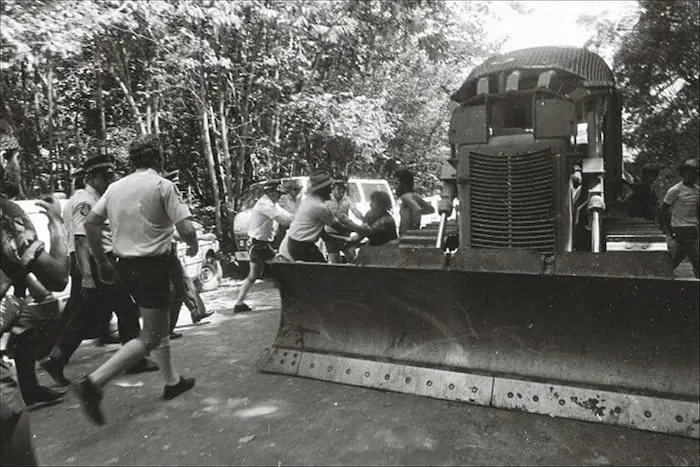
Berwick said the protesters were well organised and set up live interviews between themselves and Sydney radio stations. “What we had already done in our preparation was, we’d put a yacht out at low isles with people living on it and we had a repeater station. We had a direct line to low isles and a direct line to a radio facility in Mowbray. We had the best communications on about 1 watt and the coppers had hundreds of watts and couldn’t get their messages out.”[5]
Berwick went on to be elected Mayor of Douglas Shire, a position he held from 1991 to 2008. He led the way for local councils, achieving a balance between tourism, agriculture and the environment.
In December of 1991, as Mike was approaching his first Christmas as Mayor of the Douglas Shire, I was facing the biggest challenge of my life, far away from the Far North.
Spinal Rehab Brisbane
Princess Alexandra Hospital is located at 199 Ipswich Road in the suburb of Woolloongabba in Brisbane.
Nightmares
My clearest memories of my first week in Princess Alexandra Hospital Spinal Unit are of the nightmares. Every night I would dream. At the start of these dreams, I would be walking along the street enjoying myself, then some tragedy would befall me.
A truck would either hit me from behind, or in one dream I was attacked by a street gang and hit in the back with a baseball bat. The dreams would always end with me motionless on the ground, unable to move. I would awaken from these dreams not with a feeling of relief, but with a feeling of sadness.
The dreams may have been imaginary, but the result was my reality. I was on my back, motionless, and I would never be able to move again.
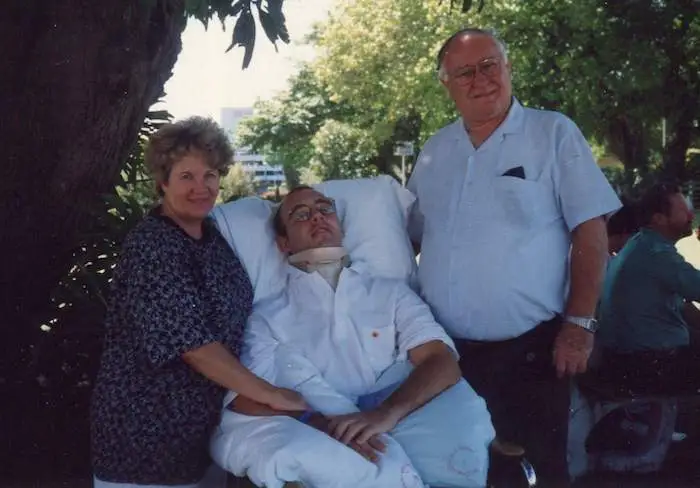
Family Support
Mum accompanied me on the flight to Brisbane, getting a last minute ticket thanks to Max Plumber from QANTAS . Max was a good friend of dad’s and a great servant of Cairns. In the days and weeks that followed my accident, my parents took control and were constantly by my side. In all the stress, Jenny’s distress was overlooked.
Jenny came to Brisbane a week after my accident, but could only stay for a few days, flying home to sort out our affairs before then returning to Brisbane for the period of my rehabilitation.
December is usually a busy month at the Princess Alexandra Hospital Spinal Unit, as the coming of summer usually brings with it a spree of injuries from diving related accidents. It was certainly busy during the month of December 1991. To some extent, it eased my pain and made me feel less alone to see others suffering at the same time.
American Friend in PA Hospital Spinal Unit
A young American by the name of Mike Knepler had the misfortune of suffering an injury like mine, and was admitted to the Spinal Unit the same day that I was. His injury was almost identical to mine and so was his resulting level of disability.
In those first few days after the accident, seeing someone else as terrified and frightened as I was, certainly seemed to help. I guess it was like the experience of prisoners of war when they have to endure great suffering. Certainly, a fair degree of camaraderie developed between the young American and myself. Through the tears and the misery, we managed to gather strength from each other.
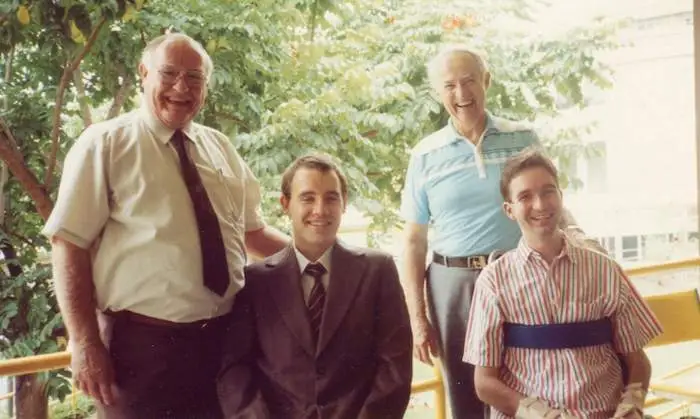
Support from Home
For the first few weeks of rehab in Princess Alexandra Hospital, patients remain in the ‘acute care’ unit. During this time I received a large number of cards and letters from well-wishers, as well as numerous visitors.
A few days after my accident, my sister Joann was called to the nurse’s station to answer a phone call. “Look, who is this really?” I heard her say in an angry voice. Then her tone changed, and she walked over to my bed. “Robert,” she said, “Prime Minister Bob Hawke’s on the phone and he wants to tell you his thoughts are with you, and to feel free to call him when you are feeling up to it.”
Things like that picked up my spirits a lot, but it was the letters I received from people back home that cheered me up the most. Some were from people who I had not heard from since high school, some from people I hardly knew, and some were from friends of dad.
There were also letters from people in wheelchairs, telling me not to give up, and that life goes on. These letters gave me a lot of encouragement. To this day I regret not attempting to reply to all the people who sent letters and cards. Maybe they will read this story, and if they do, I give them my sincere thanks.
Jenny Moves to Brisbane
Jenny’s employer Australia Post showed great compassion for our situation. They arranged a meeting between us and two of their social workers. Thanks to their excellent work and support, Jenny received a temporary transfer to Brisbane. Her new workplace was the South Brisbane Mail Centre, just 5 minutes from the Princess Alexandra Hospital Spinal Unit.
Mum and dad had rented an apartment in Brisbane. After dad returned to Cairns early in the New Year, Mum and Jenny lived in the apartment together. After mum returned to Cairns, Jenny was able to stay in Brisbane and continued to visit me every day. However, a big city can be a lonely place for a country girl. Jenny decided that she needed a little friend to keep her company.
Finding Tia
One of our first trips out of the Spinal Unit together was to visit a litter of German Shepherd puppies available for adoption. Jenny and I met with the donor family, and from several beautiful little bundles of joy, we picked the prettiest one and named her Tia.
For the rest of our time in Brisbane, this beautiful little puppy dog was a real highlight. Tia proved an excellent tonic for Jenny’s loneliness, keeping her company. It was a joy to play with her in the front yard when I was allowed out of hospital to visit Jenny.
During the first few weeks after my accident I was permanently in a horizontal position. The doctors and the physio explained to me what muscles I had lost the use of and which I had retained. Gone were all my chest muscles and everything below. I retained my biceps and wrist extension. Gone were my triceps and wrist flexion. For the life of me I could not see how I could push a wheelchair without chest or tricep muscles, however others seemed to manage it. Not being able to move my fingers anymore was an even greater concern.
PA Hospital Spinal Unit Stories
Unfortunately, reality does not always satisfy society’s need for inspirational stories of the triumph of the human spirit. Nor does it satisfy the need of the tabloid media for sensational stories of the tragic victim who overcomes the odds.
How often have we heard the tale of the brave individual who refuses to listen when the doctors tell him he will never walk again? He (typically a man) defies the odds with a hardy combination of blood, sweat and tears! So many legends had been built on this storyline, which to my disappointment, had little basis in fact.
Miracle Stories Exposed
In almost every case of spinal cord injury, no matter how serious, the patient is not told they will never walk again. This is done for two reasons. Firstly, doctors want to give people time to get over the initial shock and slowly come to terms with what has happened. Secondly, they also want to allow time for the swelling around the spinal cord to go down, just in case some of the cord remains intact and capable of passing messages down to the rest of the body.
Much of the mythology surrounding spinal cord injury has occurred as a result of what are known as ‘incomplete injuries’. Incomplete injury occurs when the trauma is not severe enough to completely block the passage of messages to the rest of the body. In some of these cases, the patient may indeed walk again or at least gain some function below the level of their injury.
PA Hospital Spinal Unit and Acceptance
To be rehabilitated, you must come to terms with your disability. Some people never do! While in the Spinal Unit I met several people who, over twelve months after their injury, still spent time during the day trying to get paralysed limbs to move – as if by sheer will, they could overcome an injury which was permanent and for which there was no cure.
The best way I have found to explain the nature of the relationship between one’s mind and one’s paralysed limbs is by using the metaphor of a light-switch and a light. Once the electrical wiring is severed, it does not matter how much you want the light to turn on, or how many times you hit the switch, nothing is going to happen.
The miracle stories I have heard over the last 30 years are too numerous to recite. However these stories place a considerable burden on people with disabilities. If it were true that people with spinal cord injuries could simply walk again through sheer will power, what implications does this have for people with permanent disabilities? Are these the people who quit with ‘no guts and no glory’? This is too heavy a weight to place on the shoulders of people who already have a lot to cope with.
The truth post injury is that people will do whatever they can, not whatever they want. We leave PA Hospital Spinal Unit that way, whether its walking, crawling, or in a wheelchair!
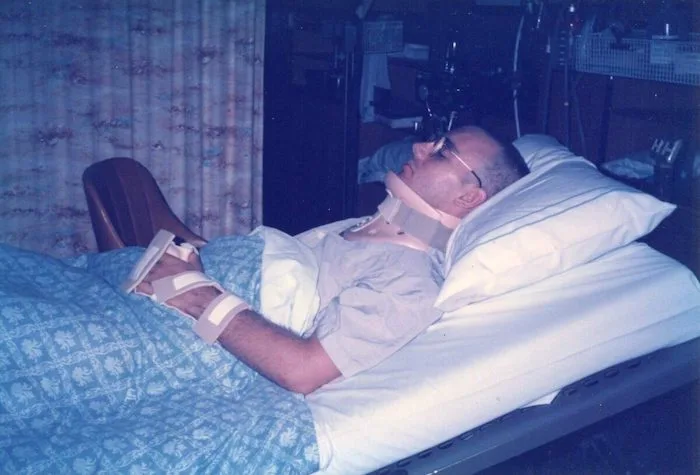
Spinal Injuries Unit
Before my accident, whenever I thought of people in wheelchairs it was always of paraplegics (those paralysed from the waist down). The idea of not having full use of your arms and hands had never occurred to me.
The time I spent at the gym prior to my accident gave me a good understanding of the various muscles in the body and what functions they perform. So, when the doctor told me which muscles I had lost the use of, and which muscles I retained, I could grasp what I would and would not be able to do.
I was paralysed from the chest down, and had lost movement in my hands and fifty percent of the movement in my arms. I still had control of my biceps, but had lost the use of my triceps. My main concern was whether I would be able to propel myself in a manual wheelchair. While my physiotherapist said it was possible, I had my doubts.
Princess Alexandra Hospital Spinal Unit Physiotherapist – Richard
My physiotherapist at PA Hospital Spinal Unit was named Richard. He was a tall, athletic young man, with dark hair and Tom Cruise good looks. I appreciated his frankness and helpful attitude, and he stole my mother and sister’s hearts straight away. “My name is Richard and I am going to be your physiotherapist,” he said. “Nice to meet you,” I replied, “but all I want to know is how long until I get out of here.” “That depends”, he said. “With quadriplegics it can be six, nine or 12 months in the spinal unit, depending on how you progress.”
“Well I’m not afraid of hard work,” I said. “I’ll be out of here in six months.” He just smiled and continued manipulating my joints.
Monday Too Far Away
“I think we’ll get you up in a chair on Monday,” he said. “Because you have been in bed for so long, it’s going to take a lot out of you. Your body is not working the way it used to. It will take you a while to get used to sitting up again. On the first go we will probably only sit you up for a few minutes as you will get dizzy. It is only natural that it will take your body a while to get used to being in a vertical position again. Your blood pressure will be lower now than it was before. You will probably become dizzy after a short while, and may experience some nausea,” he said.
I turned to dad who was sitting beside my bed and proclaimed confidently, “This guy must think I’m a wimp. Once I sit up there’s no way I will want to lie down in a hurry.” I spent the weekend anticipating getting a normal view of the world again. I had been in PA Hospital Spinal Unit for a month, yet I still didn’t know what the room looked like. However I could describe the ceiling in great detail.
Monday
Richard arrived early Monday morning with a large stainless-steel wheelchair with a reclining back. “Right, are you ready to get out of that bed?” he said. “Yeeha!” I replied, “I can’t wait.” Together with two male nurses Richard performed what was known as a three-person lift.
Richard took my legs while one nurse took me around my waist and the other grabbed me under the shoulders. They carefully transferred me to the wheelchair which was in a very reclined position. I can’t describe how wonderful it felt to get out of the bed.
Black Out
“Right,” said Richard, “if you feel okay, then we will put the back up on that thing so you can look a few of us in the eye.” “No worries mate, it will be a pleasure.” Richard placed a restraint around my chest to hold me to the back of the chair. He then moved the chair up three notches to almost a vertical position.
I felt fantastic, I could see the whole room, including people I had been staring up at for the last month. “Hey, this sure beats looking up people’s noses,” I said with a smile. No sooner had I spoken than it appeared to start to snow before my eyes, and the room turned white. My head started to spin, and then all I could see was darkness. “Quick, put the back of the chair down again,” I vaguely heard Richard say, as I disappeared into unconsciousness.
Before long, my head began to clear, and I could once again see the familiar sight of the ceiling of my room. “What’s the matter tough guy, I thought you weren’t going to quit on me?” Richard said with a smile. He added, “Don’t worry, it happens to everyone first time up. You’ll get used to it after a while, it will just take time.”
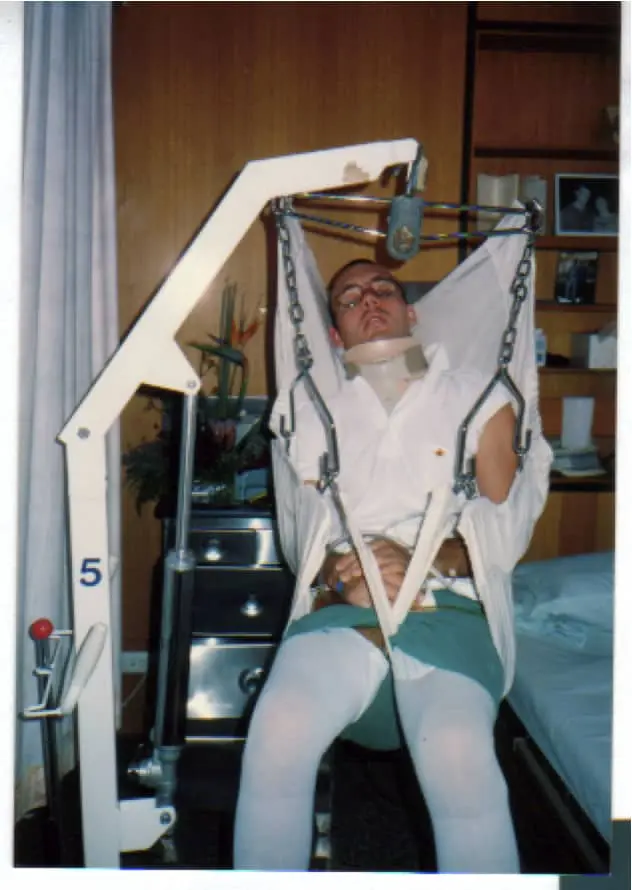
A Long Road Home
I was distressed to find out that the standard period of hospitalisation for a quadriplegic was nine months. The rehabilitation process at Princess Alexandra Hospital felt frustratingly slow to me. However, my days were busy, with physiotherapy in the mornings and occupational therapy in the afternoons.
Princess Alexandra Hospital Spinal Unit OT – Sue Lightbody
My occupational therapist (OT) at Princess Alexandra Hospital Spinal Unit was a young woman by the name of Sue Lightbody. She was an attractive 21-year-old with long blonde hair. Sue was 3 years younger than me, but my relationship to her was similar to that of a child starting school with their teacher.
When you lose your independence and need people to do everything for you, it’s natural to feel like a child again. Sue was the most important person from the PA Hospital Spinal Unit for my rehabilitation outcomes. She taught me ways of getting things done, and provided me with aids that enabled me to do simple everyday things like combing my hair and brushing my teeth.
OTs like Sue come up with great solutions to difficult problems for people with disabilities. For example, how would someone with paralysed hands who can’t move their fingers be able to feed themselves? Ring cutlery, that’s how – a jeweller’s sizing ring welded to a spoon or fork. That provided a simple and practical solution. These OTs have assisted so many people to a more independent life.
It did not take long at Princess Alexandra Hospital Spinal Unit for me to accept the consequences of my accident, and to understand the level of my disability. However coming to terms with it emotionally was more difficult. Only two months previously, I was proudly showing off my physique. Now I looked like a refugee from a prisoner of war camp.
Planning a House
Before long it became apparent to Jenny and I that it would not be possible for me to return to our house in Edmonton. While our house was ground level, I would not be able to access the toilet and bathroom, and the carpet would have made it hard for me to push my wheelchair. We considered renovations, but after calculating the cost, we decided to build a new house.
Working with Sue Lightbody, Jenny and I designed a house which would enable me to live as independently as possible. Our new house included an open floor plan and a large bedroom with ensuite. Sue came up with many useful ideas such as special taps, large light switches and an open under kitchen design.
Marriage from PA Hospital Spinal Unit
Since the accident, Jenny and I continued to talk about marriage and despite everything, we still wanted to go through with it. It was not a decision we made lightly. I had many doubts in the first couple of months in Princess Alexandra Hospital. There were many times when I told Jenny to leave and go and find a “real man.” In the end, neither of us wanted to contemplate life without each other.
Moved by the Spirit
We received plenty of advice from people who told us to wait and give it more thought. This included a series of extended discussions with the Princess Alexandra Hospital Chaplain. He too had come to the decision that we needed more time to adjust to me being in a wheelchair, and to re-define our relationship.
I can still remember the chaplain coming back, looking at Jenny and I quite sternly, saying that he had spoken to the Lord. The news from the Lord was not good. Apparently, God’s paramount concern was my ability to consummate the marriage. I thought that God probably had bigger issues than our sex life to think about. We concluded if the chaplain was hearing voices, he may not be the best person for us to take advice from.
Upon hearing this, one of the nurses told us she had a brother who was a marriage celebrant. We contacted him and said he was happy to perform the ceremony.
Wedding Day
On our wedding day, I woke up in the Princess Alexandra Hospital Spinal Unit as usual and opposite me was my American friend Michael Knepler, who had been with me since those early days in intensive care. Suddenly I heard him shout. “Oh no, here comes Jenny, you can’t see her on your wedding day, that will bring you bad luck.” I sarcastically replied, “Starting our married life off with bad luck – gee, we wouldn’t want that, would we?” Nevertheless, the day went well.
Jenny’s best friend Kerry had come down for the wedding as her bridesmaid, and Kerry’s boyfriend Michael Tanswell, who was a true-blue Edmonton local, was happy to fill in as my best man.
Helen Hart, a nurse at Princess Alexandra Hospital, had become good friends with Jenny and I during our time in Brisbane. She had been married to a quadriplegic man for over a decade. This gave Jenny and I the belief that we could have a meaningful married life despite my disability. Helen was an inspiration, and she filled the role of matron of honour.
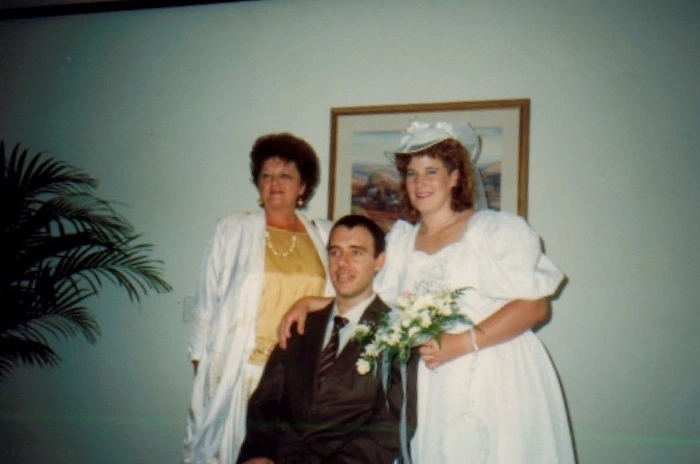
Discharge from PA Hospital Spinal Unit
By the end of August 1992, my nine months at Princess Alexandra Hospital were up. I had done my time, and I was ready to go home and start a new life. I felt emotionally prepared for my return home. However, as the plane approached Cairns and I saw the familiar countryside, tears started rolling down my face.
For the first two months after my return from the PA Hospital Spinal Unit, Jenny and I lived with my parents. At the same time we supervised the completion of our house which was less than five minutes away in Bentley Park.
I decided not to think about the things I had lost, or the things I could no longer do. Instead, I decided to focus on the things I had gained from my accident. These gifts include a greater appreciation of life and a lot more compassion for the suffering of other people. I had more respect and love for Jenny than ever before.
Most people don’t realise how much they love and need their partner until it’s too late. By then, they have lost the chance to tell them how they feel. I thank God that I still had this time to spend with Jenny and the opportunity to tell her how I felt. And I thanked God for the opportunity for us to return home and re-build our lives together.
All Chapters:
- Far North Queensland
- Growing up in Australia
- Aboriginal and Torres Strait Islander People
- Queensland Political Culture
- Princess Alexandra Hospital Spinal Unit
- People with Disabilities
- Cairns Regional Council
- Conservative Cairns Council
- ALP Qld
- Abortion Law Reform
- Fighting Fossil Fuel
- Local Government Corruption
- Losing to Labor
- My Cairns Council Return
- Council Mayors Silencing Dissent
- Socialist Alliance and Fighting Fascism
- Jenny Pyne, Life and Pain
- Cairns Council Members Swing Right
- Fightback and Farewell
Struggle & Resistance in the Far North
Notes and Pics
[1] Bill Wilkie, The Daintree Blockade: The Battle for Australia’s Tropical Rainforests.
[2] Isaac Egan, 30th anniversary of the Daintree blockade, ABC Far North, 2 Dec 2013.
[3] Bill Wilkie, The Daintree Blockade: The Battle for Australia’s Tropical Rainforests.
[4] Isaac Egan, 30th anniversary of the Daintree blockade, ABC Far North, 2 Dec 2013.
